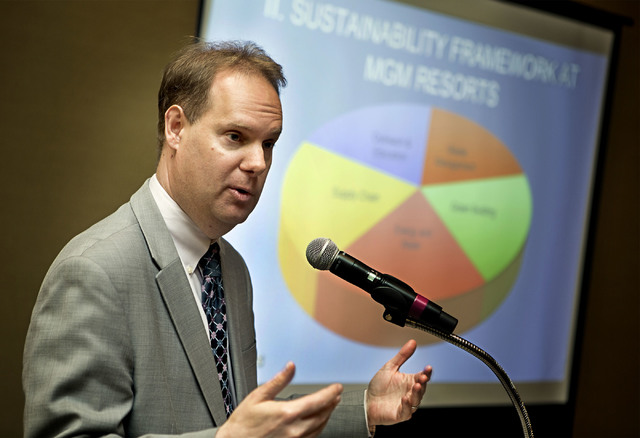
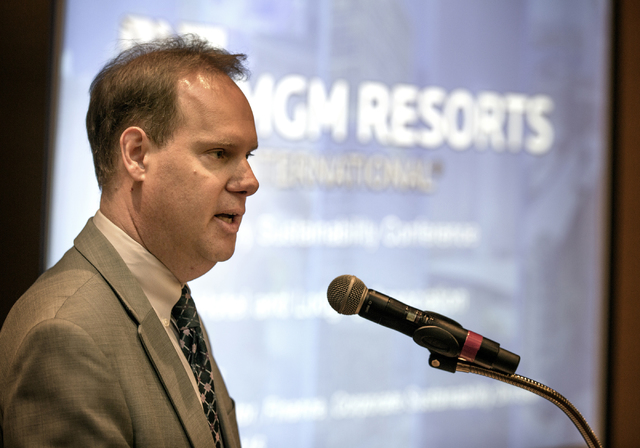
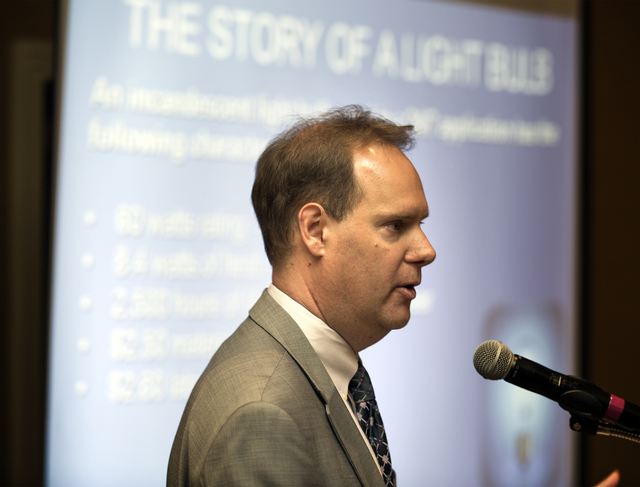

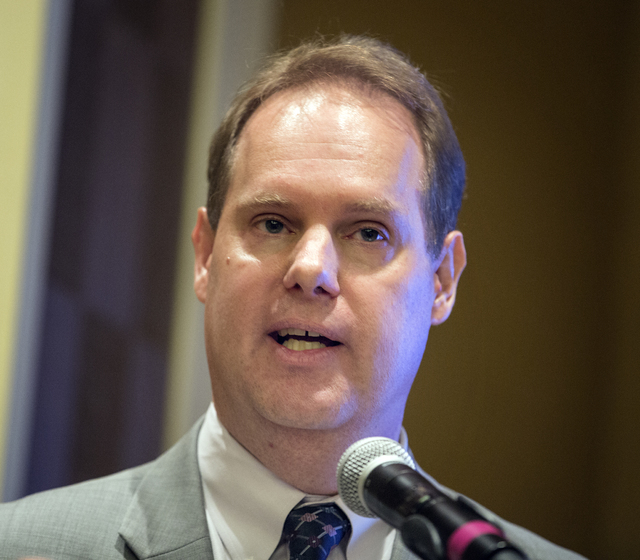

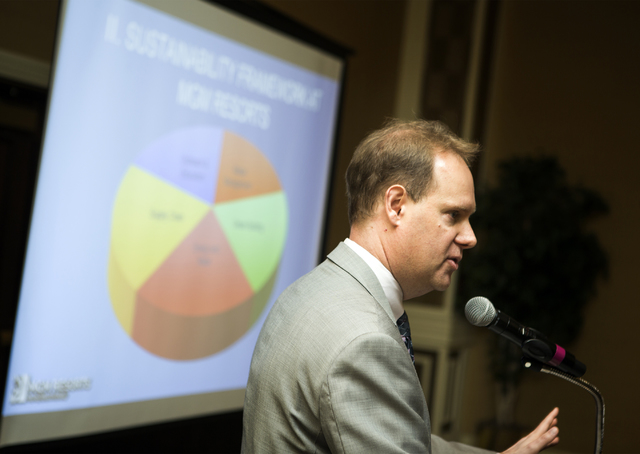
The changing landscape of where megaresorts are drawing their electricity from could lead to an expansion in alternative energy use.
Henry Shields, MGM Resorts International’s executive director of finance analysis, was a keynote speaker during Nevada Hotel and Lodging Association’s sustainability conference in November at The Orleans. He spoke about MGM departing from NV Energy and how that’s changed energy sources for several of the company’s resorts on the Las Vegas Strip.
“MGM has control over where its energy comes form and that is exactly what it sounds like,” Shields said. “You have the ability to craft, if you want, so much energy to come from certain types of generation, including both traditional and renewable energy.”
In October, MGM Resorts went through the process of detaching itself from NV Energy. The company had to pay about $87 million in fees to exit the grid. MGM isn’t the only one to make that move. Wynn Resorts also paid an exit fee, though a little less than MGM at closer to $15 million.
Also, for the next six years, the Nevada Public Utilities Commission will assess recurring charges to the companies as an additional protection to the city’s power customers.
Las Vegas Sands Corp. also received permission to exit from the utility, but backed out. The company put its support in helping fund the Energy Choice Initiative — or Question 3 on the 2016 ballot, which passed during the election cycle. The ballot measure will restructure the state’s utility market — essentially creating an open market to end NV Energy’s monopoly.
Las Vegas Sands Corp. backed the measure through a group called Nevadans for Affordable Clean Energy Choices. The measure qualified for the ballot with funding almost exclusively from Sands Corp. MGM was also a financial backer of the initiative.
The measure will be back on the ballot in 2018. If it passes, it will become law. The regulatory changes would go into effect on July 1, 2023.
In the case of MGM, it’s already gained some freedom, though it didn’t completely disconnect from NV Energy.
“NV Energy still owns the lines that provides a local transportation of power,” Shields said.
But MGM also has been brewing some work of its own energy production. Mandalay Bay Convention Center and Mandalay Bay’s solar footprint equates to 26,000 solar panels. The company announced an expansion earlier this year after installing about 21,000 panels in 2014. The 8.3 megawatt-system is now the largest rooftop array in the U.S., the company announced in July.
According to a press release, the system will provide Mandalay Bay 25 percent of the resort’s power once it is at full production. The array stretches across 28 acres on the roof and produces enough energy to power to 1,340 U.S. homes for one year or remove the carbon equivalent of 1,700 cars from the road.
The event also hosted several keynote speakers to talk about sustainability issues and solutions. Presenters at the show were from the Environmental Protection Agency, the Southern Nevada Water Authority, Republic Services, Verdek EV and CNG Solutions.
The Las Vegas Review-Journal and the Las Vegas Business Press are owned by the family of Sheldon Adelson, chairman and CEO of Las Vegas Sands Corp.







